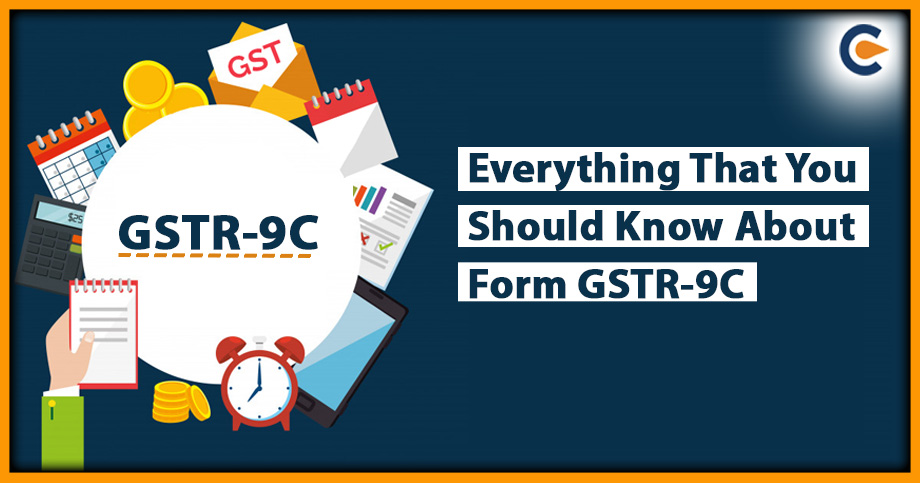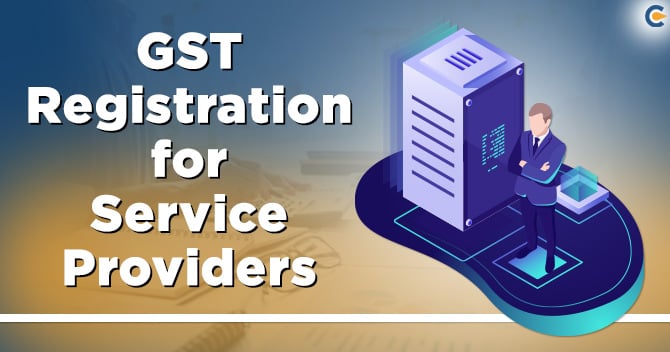Any person who is registered for GST (Goods and Services Tax) and whose annual revenue exceeds the stipulated limit of INR 5 crore must complete Form GSTR-9C, the reconciliation statement, and self-certify it before submitting it on the GST portal[1].
A Statement Of Reconciliation Between Is Included In Form GSTR-9C:
- The annual returns submitted in Form GSTR-9 for a fiscal year (FY)
- The statistics taken from the taxpayer’s yearly Financial Accounts, which have been reviewed.
It shall be composed of gross and taxable turnover determined by the Books and reconciled to the corresponding sums determined by the consolidation of all GST returns for a fiscal year.
So, any discrepancies discovered via this reconciliation process will be recorded here along with their justifications and then verified by the taxpayer. For each GSTIN, the certified statement must be issued. As a result, a PAN may require filing multiple GSTR-9C forms.
Who Are Required To Submit Form GSTR-9C?
The taxpayer is required to complete and self-certify GSTR-9C. It must be submitted by the taxpayer in Form GSTR-9 on the GST site or through a facilitation centre, together with other paperwork including a copy of the audited financial statements and annual report. This declaration is applicable to all taxpayers who, in accordance with GST legislation, are required to have an audit of their annual accounts.
All foreign corporations engaged in the aviation business and in compliance with the relevant requirements and guidelines of the Companies Act of 2013 are exempt from the GSTR-9C requirement, according to CBIC’s CGST notification, dated July 30, 2021.
Also, non-residents who provide OIDAR services to unregistered individuals in India are excluded from submitting GSTR-9 and GSTR-9C.
What’s The Importance of Form GSTR-9C?
The GST Reconciliation statement must be completed by the taxpayer. Any discrepancies between the information provided in all GST forms and the audited accounts must be noted there along with the reasons why they exist. The GST authorities use this declaration as a foundation to check the accuracy of the GST returns submitted by the taxpayers. The taxpayer is required to self-certify the Form GSTR-9C.
What Is The Due Date For Form GSTR-9C?
It is also necessary to submit Form GSTR-9C by the same deadline as the annual returns are required in GSTR-9. The Form GSTR-9C must be submitted by the deadline of December 31 of the year after the relevant FY under audit. If the government determines it is required, the due date may be extended.
What Are The Contents Of Form GSTR-9C?
There are two key components to the GSTR-9C.
- Reconciliation Statement in Part A;
- Self-certification in Part B
Part-A: Reconciliation Statement
The financial statements’ audited figures are at the PAN level. Hence, the total turnover, tax paid, and ITC gained for a specific GSTIN (or State/UT) must be taken from the organization’s audited records.
According to Notification No. 56/2019, which was released on November 14th, 2019 The following modifications were made for FY 2017–18 and FY 2018–19:
The taxpayer may report adjustments, if any, that are needed to be reported in Table 5O. Descriptions of turnover adjustments that must be made in tables 5B to 5N are now optional.
In tables 12B, 12C, and 14, a taxpayer has the choice to omit filling out the specifics of the ITC reconciliation.
The Reconciliation Declaration Is Broken Down Into The Following Five Sections:
- Part I: Basic information includes the following: FY, GSTIN, Legal Name, and Trade Name. The taxpayer must also state if any other laws have subjected him to audit.
- Part II: Comparison of the turnover reported in the audited annual financial statement and the annual return (GSTR-9) turnover:
This entails submitting the audited financial statements along with the reported gross and taxable turnover from the annual return. One must keep in mind that PAN levels are typically used in the audited financial statements. The audited financial statements may need to be divided up at the GSTIN level for reporting in GSTR-9C as a result.
- Part III: Reconciliation of tax paid: This section demands GST rate-wise reporting of the tax liability that emerged according to the accounts and paid as reported in the GSTR-9, respectively, with the disparities therebetween. Additionally, it mandates that the taxpayers disclose any additional responsibility resulting from discrepancies that were discovered during reconciliation.
- Part-IV: Input Tax Credit (ITC) Reconciliation Input tax credits claimed and used by taxpayers as reported in GSTR-9 and as stated in the Audited Financial Statement are reconciled in this section.
Additionally, it needs to report expenses that were incurred in accordance with the audited accounts, break down eligible and ineligible ITC, and reconcile the eligible ITC with the amount reported on GSTR-9. This declaration will be made after taking into account any ITC claimed reversals.
- Part-V: Tax payer self-certification.
Latest Development around the Form GSTR-9C
- 49th GST Council Meeting Updates (18th February 2023)
- From FY 2022–23 onward, the council recommended the following late fee rationalisation for GSTR-9 filing delays:
- A registered person’s daily fee is decreased to INR 25 subject to a maximum of 0.02 percent of turnover if their annual aggregate turnover (AATO) is up to INR 5 crores.
- Registered persons with AATO with a turnover of between INR 5 crore and 20 crores are limited to INR 50 per day with a maximum of 0.02 percent.
- The Council advocated for a GSTR-9 return amnesty programme. A conditional waiver or reduction of late fees is included in this plan.
- Budget 2023 (1st February 2023)
The GSTR-9 due date was added to Section 44 as a result of Budget 2023 amendments. When three years have passed since the initial due date’s expiration, taxpayers can no longer file a GSTR-9.
- 16th November 2022
GSTR-9 (annual returns) has changed its structure to refer to the time period following the FY 2021–22.
- 05th July 2022
GST-registered taxpayers having yearly aggregate revenue up to INR 2 crores in FY 21–22 are excluded from completing Form GSTR-9, according to the CBIC.
- 30th July 2021
Changes to the CGST Act’s Sections 35(5) and 44 have been announced by the CBIC. The need for a CA/CMA to perform a GST audit and certification has been eliminated. Taxpayers must submit Form GSTR-9C on a self-certification basis if their revenue in the preceding fiscal year exceeded INR 5 crore. This modification took effect in FY 20-21. Moreover, Form GSTR-9C will be changed to facilitate taxpayer self-certification.
- 28th May 2021
GSTR-9 will continue to be optional for taxpayers with a turnover of up to INR 2 crore; however, starting in FY 2020–21, taxpayers with a turnover of less than or equal to INR 5 crore can self-certify GSTR-9C.
Conclusion
Form GSTR-9C is the annual GST reconciliation statement that qualified taxpayers submit. Each registered person must have their accounts audited in accordance with sub-section (5) of Section 35 of the CGST (Central Goods and Service Tax) Act if their combined annual revenue exceeds INR 5 crore. They must provide a copy of the audited yearly accounts and a properly certified reconciliation statement in Form GSTR-9C.
Read Our Article: Casting Light On The Changes In GSTR-9C For FY 2020-21











